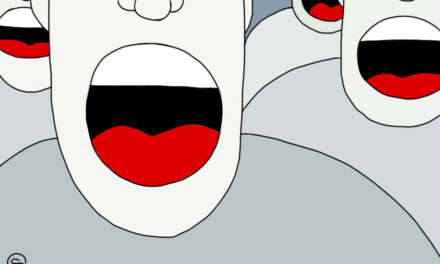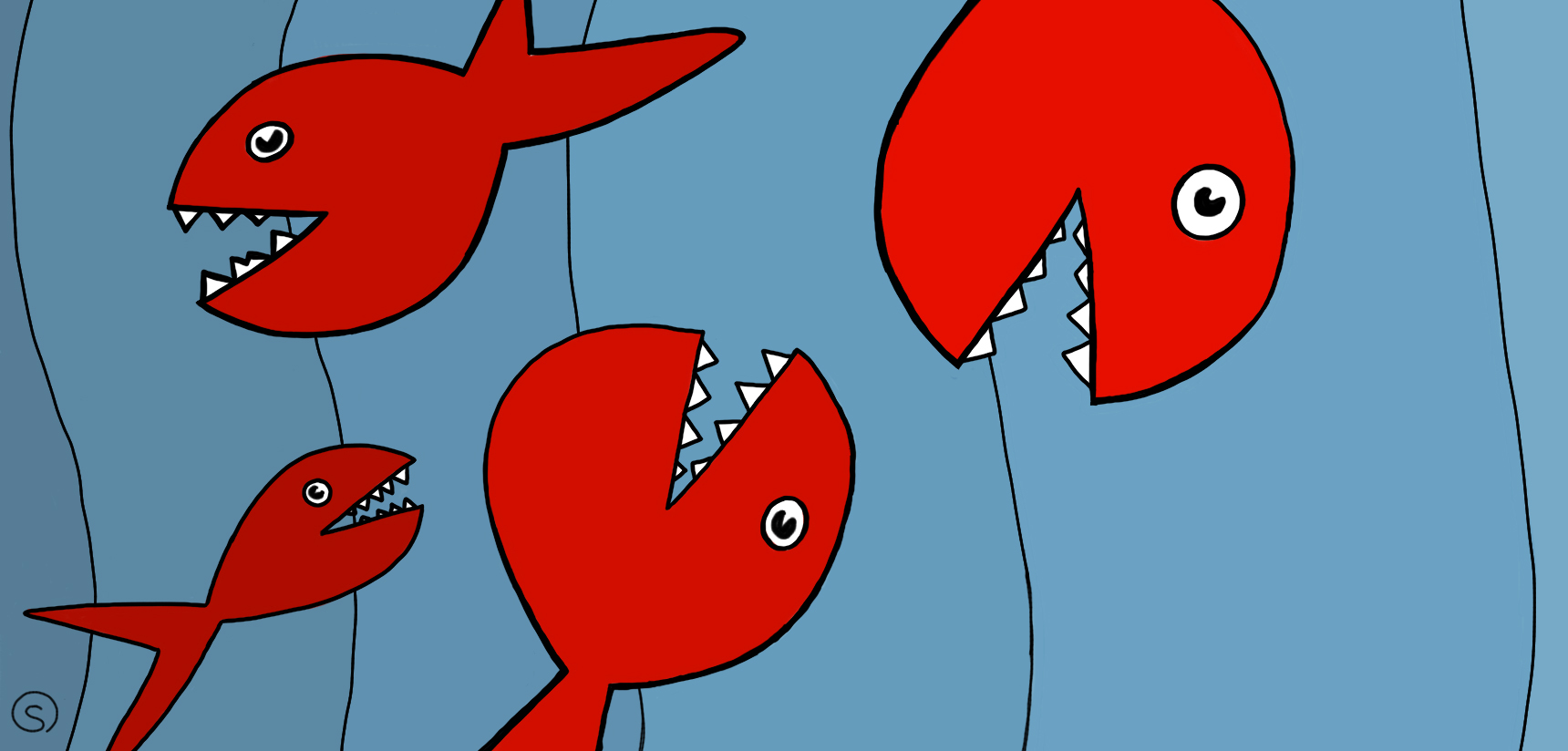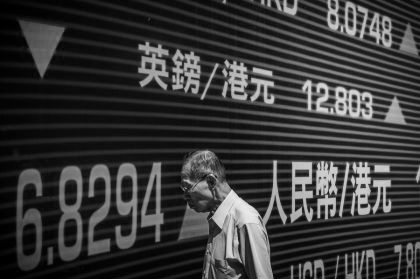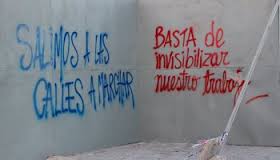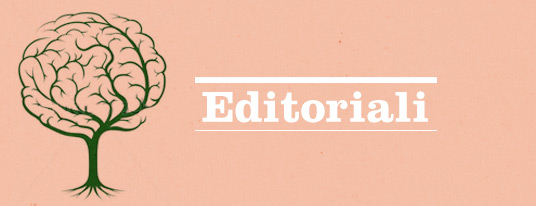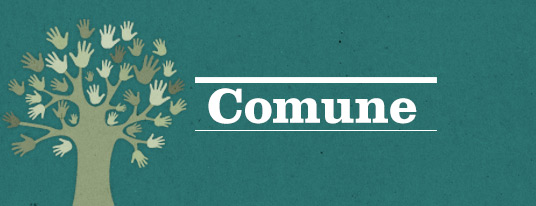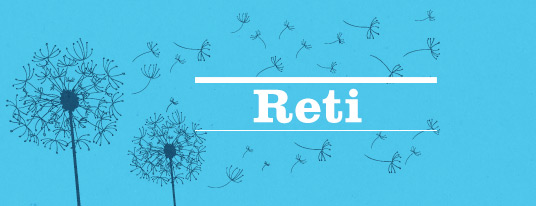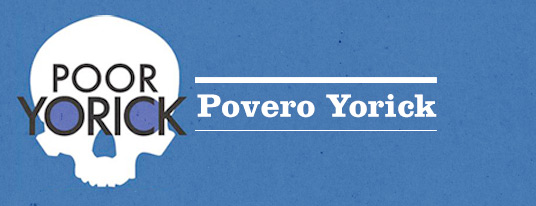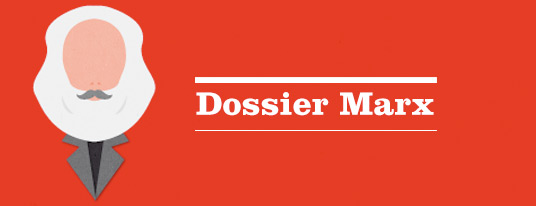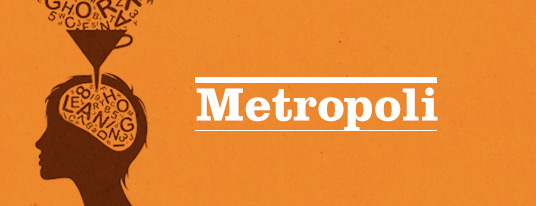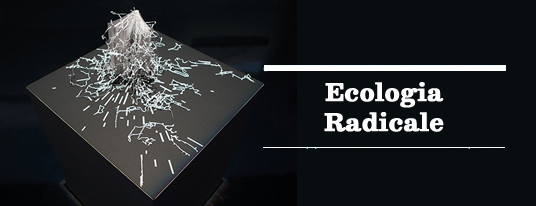di ILYA MATVEEV
Pubblichiamo nel Dossier Mondo quattro articoli in inglese che narrano la composizione delle lotte in Russia dal 2011 al 2013 e come esse si siano scontrate con la riforma dello Stato e delle strutture comunicative del Paese sotto la ferrea linea di Putin. Molto interessanti sono le piste che in questi articoli emergono relativamente alle nuove forme di produzione di soggettività che in queste lotte si sono date. Gli articoli sono stati pubblicati sulla rivista americana The South Atlantic Quarterly (113:1, Winter 2014) nella sezione Against the Day in un dossier comune dal titolo “Democracy Has Become Unmanageable!” The Russian Protests in a Global Context. [EuroNomade]
According to Ernesto Laclau and Chantal Mouffe, “every object is consti- tuted as an object of discourse” (2001: 108). In one of their favorite exam- ples, an earthquake or a falling brick can be constructed as “natural phe- nomena” or as “expressions of the wrath of God,” depending on what they call the “discursive field,” that is, the elements that at a given time are not yet ordered into a discourse, shaping what are otherwise called “floating signifiers,” linguistic raw materials caught in a battlefield of ideologies struggling for a hegemonic position in a given society (2001: 108). Though Laclau and Mouffe’s approach has been criticized as reductive and too lin- guistically oriented, it is useful for the analysis suggested here.
The structure of the discursive field and struggles for hegemony are important for understanding the mass protests that have taken place in Rus- sia between 2011 and 2013. These protests have taken the form of mass rallies, with up to 100,000 participants in Moscow in the winter of 2012. The images of huge crowds in the streets of Moscow and other Russian cities are impres- sive, but what does one make of this movement? What do these crowds sig- nify, apart from the immediate demands of “fair elections”? In other words, who are these people taking to the streets, and what do they want?
The answers obviously depend on the discursive frame in which the protests are constructed, and the battle to define this frame has been ongo- ing since the emergence of the movement. How one defines the “interpreta- tive horizon” for the protests is clearly a political question. However, to set the scene for this question properly I need to clarify one important issue: the recent protests in Russia are indeed an object of discourse, but as far as they are an object of public discourse and discussion, they are a special case, the historical and social particularity of which I hope to expose here.
After the collapse of the Soviet Union, politics in Russia became domi- nated by the so-called technological approach, as various factions of the elite used the political system and the media as instruments to advance their own often hidden agendas. This approach to politics created a wide gap between words and deeds, since any publication, media coverage, and even any public activity could be negotiated and packaged as an expensive product aimed at the direct manipulation of public opinion. The result was a political culture of great mistrust toward public life as such, spread among the majority of the population (since public life usually was—and still is—a facade for some kind of insider scheme), as well as the general depoliticization of Russian citizens, which blocked possibilities to intervene and subvert this cynical and purely manipulative understanding of politics.
But the latest protests broke this vicious circle. Demonstrations this large had not taken place in Moscow since 1993. A 100,000-strong opposi- tion rally mostly made up of “ordinary people,” not activists of any one orga- nization or group, cannot be a product of direct manipulation or some kind of “technological” scheme: the scale itself excludes this possibility. Thus the protests constituted the first real and genuine political event in many years— a phenomenon of public life with causes internal to itself, independent of conflicts between factions of the ruling class.
Thus the protests entered the discursive field as a genuine and proper event in the sense that they were authentic and could not be interpreted as an effect of manipulation. As such, they demanded a different kind of expla- nation. In the public sphere, however, the discursive framing and interpreta- tion of the protests immediately started to take shape along familiar lines. The old “theory” of the “two Russias” was revived soon after the protests erupted. This theory has been propagated mostly by liberal journalists and political commentators. Using two polemical strategies, it splits the Rus- sian people into two groups far apart. The first strategy is to make a list of cultural traits supposedly defining the two “peoples” or, better yet, a “peo- ple” and a minority of some kind. For example, journalist Valery Paniush- kin (2012) writes of the distinction between those who love pelmeni (meat dumplings, a simple Russian dish) and those who love oysters, aligning himself with the oyster lovers. He then added further contrasts, putting Glenn Gould on the one side and popular Russian singers on the other, and so on. Political writers especially adopted this binary opposition strat- egy to construct a cultural gap and to endow the resulting two groups with particular qualities. Obviously, the group that first took to the streets in December 2011 is assumed to come from the minority with higher cultural capital.
A second common polemical strategy is to recall some personal expe- rience of encountering the “others.” This experience usually ends either in the affirmation that the “others” (the “people”) are hopeless or in a cathar- tic moment of unexpected mutual understanding. Either way, the people are supposed to be very different and unknowable, comparable to aliens.
The theory of the two Russias constructs a veritable ontology of Rus- sian politics, naturalizing differences in ways of life, behaviors, and tastes that otherwise could be critically explained by social and economic condi- tions of various social strata and their genealogies into “primordial,” eternal qualities, forcing their bearers into an ahistorical and unresolvable confron- tation. The discursive frame constructed this way provides an easy answer to the question of who took to the streets and who stayed at home. The immov- able silent majority still supports Putin because of certain defining inner qualities, like resistance to change, while the enlightened minority takes part in the protests, desperately trying to galvanize the rest of Russia.
Supporters of this view usually endorse one of two ways forward. Some, like the essayist Dmitry Olshansky (2012), claim that there is nothing one can do but wait until the majority becomes more cultured, thus allowing for a more progressive regime. One might call this a hard approach to the cultural divide. Others condemn such a stance, however, retaining the origi- nal opposition between the “people” and the minority while drawing differ- ent conclusions about it. Journalist Andrey Loshak (2012), for example, sug- gests a “cultural expansion” from Moscow to other, less developed regions in order to explain everything to the “people,” so that in the next elections they will choose the right president. This neocolonialist discourse, with its soft approach to the cultural divide, replaces the “white man’s burden” with the Moscow intelligentsia’s burden and takes its inspiration from the Narodnik movement of the 1870s and its “going to the people” campaign. While the supporters of the hard approach engage in isolationist thinking and suggest that the intelligentsia should defend itself and its values against the attacks of the people (viewing the repressive state as a reflection of the “people” and its brutal traits and tastes), proponents of the soft view emphasize educating and enlightening the “people,” who are seen as a powerless, suffering mass pushed into barbarism.
However different with regard to strategy, both hard and soft approaches to the cultural divide share some fundamental qualities. They both operate on the level of culture and situate an insurmountable gap between the major- ity and the minority. The minority is supposed either to wait for the right time or to engage in educating and raising the cultural level of the people. Together these conceptions shape mainstream political journalism in Mos- cow when questions of mass subjectivity are at stake.
Obviously these strategies are not innocent. Making lists of cultural differences and publishing them in the magazine Snob—its name alone speaks volumes—is aggressive social stigmatization. Treating the people as a voiceless mass to educate and enlighten is a symptom of quasicolonial- ism. But even more important, this dispositif does not exist in a vacuum: it is confronted by the official propaganda machine, which readily exploits and escalates all signs of the culture war.
Kremlin officials use examples of the social stigmatization of the peo- ple against the propagators. They accuse the opposition movement of elitism and excessive privilege, and contrast this cultural elite with the “people,” who are poor and benefit from so-called stability (a watchword of the last decade’s official propaganda) established in the Putin era. Moreover, govern- ment propagandists create public figures who are supposed to be the voice of the workers, like Igor Kholmanskikh, a shop manager posing as an ordinary worker from a Siberian weapons plant. Kholmanskikh started his political career with an aggressive speech against protesters while appearing on the TV broadcast “Direct Line with Putin”; he is now Putin’s official representa- tive in the Ural Federal District.
Liberal pundits operating in the two Russias framework have only one choice: to accept the rules of the polemics forced on them by the Krem- lin and to treat the image of the “people” created by the Kremlin as an accu- rate reflection of the “people” they write about themselves. In this culture war, the two sides are fueling each other’s cause.
A deeper look into this phenomenon reveals two distinctive features. First, on the side of the liberal intelligentsia it reflects a “status panic” (Mills 2002: 240). In his book on the emerging “new middle class,” White Collar, C. Wright Mills identifies two types of society in relation to prestige claims. In one, “everyone’s prestige is absolutely set and unambivalent.” In the other, “prestige is highly unstable and ambivalent: the individual’s claims are not usually honored by others.” According to Mills, the United States in the early 1950s was closer to the unstable and ambivalent model. He explains: “The enjoyment of prestige is often disturbed and uneasy. . . . The bases of prestige, the expressions of prestige claims, and the ways these claims are honored, are now subject to great strain, a strain which often puts men and women in a virtual state of status panic” (240).
One might draw a parallel between the United States in the 1950s and Russia in the 2000s. During these periods, both countries saw the emergence of a new middle class. In the case of the United States, it was the new salaried middle class: clerks, salespeople, and other white-collar workers. In the case of Russia, the (post-)Soviet intelligentsia was complet- ing its transformation into the middle class of a new capitalist country. The income of this social group in Russia may still have been low, but its iden- tity was increasingly shaped around consumption and social status, thereby justifying the label “middle class.” Just as in the United States in the 1950s, the new middle class in Russia felt that its prestige claims were not hon- ored. It responded with social arrogance, which in turn fueled its cause in the culture war.
In 2002, Tatyana Tolstaya, a popular writer, published an essay titled “Stena” (“The Wall”). Significantly, it was published in Architectural Digest, a magazine of architecture and design that set the latest trends of “cultured” high consumption (Tolstaya 2013). The setting of Tolstaya’s autobiographi- cal tale was her own apartment: while renovating, she destroyed the wall between the kitchen and the living room, which resulted in her having to share the room with her maid all the time. The maid, Nadezhda Terent’evna, with her uncivilized manners and constant nagging, made Tolstaya’s life miserable. She couldn’t work, she couldn’t earn a living, and therefore she had to fire her maid. “When I destroyed the wall, I didn’t just remove the border between two areas,” lamented Tolstaya. “I broke the cultural and class balance, I tore the invisible circles around the worlds of the master and the servant, protecting them from each other. I destroyed the protective hierar- chy” (569–70).
The wall in Tolstaya’s apartment represents the wall between two classes, two cultures, and indeed two Russias. If ours were a society in which prestige was stable and unambivalent, there would be no need for such snob- bish outbursts and crude symbolism. What Tolstaya’s story reveals is not a “protective hierarchy” but rather the lack of one. The two classes are not really separated by an insurmountable gap, and thus there is a need to put up a symbolic wall between them. The perceived gap in cultural capital and actual capital does not always coincide in modern Russia.
The second distinctive feature of the two Russias theory is the fact that it is not really a theory but rather a part of the doxa, in Pierre Bourdieu’s terms: a “common knowledge” devoid of critical reflection. As a cultural arti- fact, this theory is a product of the spontaneous sociology of journalists, not genuine theoretical thinking, which institutes a radical break with common sense. This theory has always been a blunt, insensitive generalization. The scores of articles with a variant of “two Russias” in their titles reveal a clear pattern: when a writer needs to generalize some facts and findings, and to do so fast, he or she resorts to the two Russias thesis, which allows the writer to produce a theory at minimal cost. Although this kind of operation is not uncommon for journalists, journalists wield great influence in Russian pub- lic life, and this is supported by a corresponding absence of public intellec- tuals who combine deep knowledge with public renown and influence over public opinion. In the near absence of independent political parties, move- ments, and counterpublics, where “ideas and alternatives of social life are truly debated” and which “have a chance really to influence decisions of struc- tural consequence,” as Mills put it in Sociological Imagination (Mills 2000: 190), journalistic thinking largely coincides with the protesters’ imagina- tion. The printed and Internet press is one of the few relatively independent institutions, and it plays a special role in the Russian political process. The influence of what Bourdieu calls the “journalistic field” (Bourdieu 1999: 68–79) on other social “fields” in Russia is very strong.1
I have noted that the two Russias theory has operated on the level of cul- ture. But what has been striking in the 2011–2013 protest wave is the singular role played by journalists, writers, and other professional culture producers, largely due to the fact that the key leaders of the liberal opposition were dis- credited and mistrusted by the people. Other leaders had to step in, endowed with moral authority and a certain distance from the dirty world of politics. Quite naturally, they came from the world of culture: they included the jour- nalist Leonid Parfenov, the writer Grigory Chkhartishvili (pen name Boris Akunin), and the writer and poet Dmitry Bykov. As professional producers of culture, they tend to make generalizations on the level of culture, not on social, political, and economic levels, and the very nature of these generaliza- tions is affected by their professional activity. Therefore, even if they are not willing to wage a culture war on the “second Russia,” they are still trapped in the problematic of the two Russias. They comment on politics through the language of culture, thus culturalizing politics. For example, in June 2011, several months before the protests began, Chkhartishvili and the poet and essayist Lev Rubinshtein (Rubinshtein and Chkhartishvili 2011) discussed the idea of physically separating the Russia of “literature, culture, spiritual quest, defiance of tyranny” and the Russia of “state violence, humiliation, informing,” giving the latter the oil-rich regions and the former the more economically depressed areas, which the intelligentsia would quickly turn prosperous. Interestingly, Rubinshtein viewed this idea as “utopian” (albeit “likeable”), but for Chkhartishvili it was important for “goal-setting.” Gener- alizations of this kind shape the political thinking of liberal opposition lead- ers: this is the political grammar within which they operate.
This problematic always engenders a vicious circle. For instance, pop- ular essayist Ivan Davydov (2013) in a 2013 article titled “Drugie my” (“Another We”), encourages “us” (a highly educated and cultured minority) to be less condescending and to refrain from sarcastic comments about the people who manifest their otherness by uploading silly Photoshopped images onto their social networking pages. “Yes, it is funny,” Davydov writes about such sarcasm: “But apart from that it is something else. Something moderately pleasant. A whim to erect another wall. Draw a dividing line.” Davydov thus distances himself from the likes of Tolstaya, who wants pre- cisely to create a wall, draw a dividing line, and so on. However, Davydov’s proposed solution sounds quite familiar: “All this means it is possible to talk to them. It is possible to try and explain to them what is wrong with the country. . . . In order to do this we should first tell ourselves one quite unpleasant thing: ‘they’ are not they. They are we. Simply another we.” One can see an obvious flaw in this plan: precisely the gesture of explaining something to them essentializes “us” and “them” as social and cultural groups. The wall is erected and the dividing line is drawn in the very attempt to abolish them.
In order to escape this circular logic, let us change the scene. In March 2012, while the protests against election fraud were still strong and political commentators were writing editorial after editorial about the two faces of Russia, another kind of protest broke out in Kaluga, a city not far from Mos- cow, with a population of 325,000 and a large modern industrial cluster.
Workers at Benteler Automotive, an auto parts supplier for the nearby Volkswagen assembly plant, went on strike to demand recognition of their local union, which is affiliated with the Interregional Trade Union of Auto Workers. During their three-day strike, some 180 workers nearly stopped the production at Volkswagen. After the intervention of the regional authori- ties, the striking workers won recognition for their union and then, after three months of bitter collective bargaining, signed one of the best collec- tive agreements in the industry.
Since these workers were striking only for the recognition of their union, their protest was clearly not motivated by material needs alone. They fought for their rights, that is, the right to collective bargaining, just as peo- ple in Moscow and other big cities fought for their right to fair elections. The protest of the Benteler workers was far from spontaneous—it was preceded by months of intensive organizing. The legal prowess of the union members far exceeded that of the political protesters. However, there is no way to count Benteler workers as part of the cultural minority or the first Russia. Their example shows that the fight for one’s rights and dignity is in no way limited to the intelligentsia, and that people from other strata should not be treated as incapable of social and political agency, whether patronized as a mass to be educated or demonized as a brutal crowd.
How did the Benteler protest become possible? The shortest answer is that the workers were empowered through the process of self-organiza- tion that was facilitated by trade union organizers and left-wing activists. Significantly, there is no equivalent for the word empowerment in the Rus- sian language—nor is there an equivalent concept and practice of empow- erment in the Russian opposition movement. The movement is focused on “explaining,” not organizing, “cultural expansion,” not collective action.
These qualities of the liberal part of the opposition movement are exemplified in a relief effort that took place in Krymsk. Massive floods in July 2012 devastated this city in southern Russia, as well as several smaller localities nearby. The death toll exceeded 170, and thousands of people lost their homes. The tragedy was followed by an impressive volunteer effort from all over Russia: hundreds of people came to Krymsk, set up volunteer camps, helped flood victims clean their homes, and distributed food and other supplies. Many volunteers (including several of the leaders) were activ- ists and sympathizers of the opposition movement. However, to my knowl- edge, no systematic attempt was made to organize the inhabitants of Krymsk (a city of 57,300) themselves. In stark contrast, community groups like the Association of Community Organizations for Reform Now devoted consid- erable attention to organizing the victims of Hurricanes Katrina and Sandy in the United States.
Some active participants of the Krymsk volunteer campaign proceeded to create their own charities. For example, Dmitry Aleshkovsky, a photog- rapher, volunteer, and opposition activist, founded an organization called Nuzhna Pomoshch’ (Help Needed). A cross between a media outlet and a charity foundation, this group brings attention to individual cases of “social heroism” and mobilizes help for the people involved. Among the social heroes are nongovernmental organization workers and public employees such as rural doctors. Such an approach to charity is natural for the intellectual core of the opposition movement. Characteristically, many prominent journalists (Davydov among them) take part in the group’s activities. How- ever, although the group helps individuals, sometimes shouldering the direct responsibilities of the government, it does not concern itself with collective struggles, such as those being waged in the public sector. For example, pediatricians in the city of Izhevsk organized an independent union and staged a work-to-rule strike in May 2013,2 fighting against increasing work- loads and poverty. This extremely rare public sector protest was largely ignored by the liberal media, including the same media outlets that work with groups like Nuzhna Pomoshch’. It seems that workplace protests (involv- ing organizing and empowerment) and opposition protests exist in differ- ent realities—and that the ideology of the culture gap, which is dependent on an image of the “people” lacking agency, plays a significant role in this divide as well.
Leaders of the opposition movement still do not focus their efforts on organizing various groups of the Russian population; they still speak of the two Russias. And the Kremlin continues to mirror this discourse with that of “ordinary working people.” Petty ideologists and experts gather around fig- ures like the aforementioned Kholmanskih. Aleksey Chadayev (2013), author of Putin: His Ideology, recently took part in a roundtable chaired by Kholman- skih and then wrote an article for a loyalist newspaper. The roundtable was dedicated to the figure of the “man of labor” (chelovek truda). In his article, Chadayev claimed that, yes, there are two Russias: one oriented toward con- sumption and the other oriented toward creation. Curiously, the latter, in Chadayev’s definition, includes both the worker and the entrepreneur. They are both “producers,” whereas the protesters are only consumers. In his defi- nition, the traditional liberal argument is turned upside down.
The permanent culture war of the two Russias leaves the majority of the Russian population voiceless and powerless. Some parts of the Russian Left have identified this vicious circle and tried to break free, to infuse the culture of organizing, collective action, and empowerment into the protest movement of 2011–2013. For example, during the short-lived Occupy camp in Moscow in May 2012, various radical left-wing groups played a central role in establishing a general assembly and a practice of direct democracy at the camp. Although the Occupy protesters were mostly liberal, as was the oppo- sition movement as a whole, the Left provided a dynamic of self-organization and grassroots activism. Another interrelated effect of this infusion of grass- roots self-organization into the movement was the rejection of the so-called leaders of the liberal wing of the opposition (the same writers, media celebri- ties, etc.) who attempted to appropriate the Occupy camp for their own purposes. Speaking at opposition rallies, left-wing activists stressed that the movement should unite various social groups in common collective strug- gles and not revel in self-aggrandizing fantasies of exclusivity. Dismantling the two Russias divide and opening the protest movement to the majority of citizens should be carried out not just by means of critique and the produc- tion of a counterpublic but also through these forms of practice. The Mos- cow Occupy and other occasions of people’s empowerment serve as a beacon for left-wing activists, offering a liberating alternative discourse and antici- pating future struggles.
Notes
- 1 Interestingly, when social scientists, rather than journalists, treat the same theme, they tend to transform and differentiate the entire problematic. Thus Natalia Zubare- vich (2011), an economic geographer, writes not of two, but of four Russias, identify- ing each with clear demographic, educational, and economic criteria. Her nuanced vision of Russian regional structures is very far from the idea of a simplistic, clear-cut gap between two cultures.
- 2 Work-to-rule is an industrial action in which workers strictly follow the rules and regulations in order to slow down the production process.
References
Bourdieu, Pierre. 1999. On Television. New York: New Press.
Chadayev, Aleksey. 2013. “Samurai tagila” (“Tagil Samurai”). Izvestiia, April 15. http://izvestia
.ru/news/548692.
Davydov, Ivan. 2013. “Drugie my” (“Another We”). Svobodnaia pressa, April 25. http://svpressa
.ru/society/article/67295/.
Laclau, Ernesto, and Chantal Mouffe. 2001. Hegemony and Socialist Strategy: Towards a Radi-
cal Democratic Politics. London: Verso.
Loshak, Andrei. 2012. “V Oflajn!” (“Into Offiline!”). OpenSpace.ru, March 29. http://os.colta
.ru/society/projects/201/details/35508.
Mills, C. Wright. 2000. The Sociological Imagination. Oxford: Oxford University Press. Mills, C. Wright. 2002. White Collar: The American Middle Classes. Oxford: Oxford Univer-
sity Press.
Olshansky, Dmitry. 2012. “Grazhdanskie Manifesty/Dmitry Olshansky, Zhurnalist” (“Civic
Manifests/Dmitry Olshansky, Journalist”). Afisha, May 18. www.afisha.ru/article
/dmitrij-olshanskij-zhurnalist/.
Paniushkin, Valerii. 2012. “Chto obschego u menia s narodom?” (“What Do I Have in Com-
mon with My People?”). Snob, April 3. www.snob.ru/selected/entry/47631. Rubinshtein, Lev, and Grigory Chkhartishvili. 2011. “Zanimatel’noe stranovedenie” (“Engag- ing Country Study”). Bol’shoy Gorod, June 30. http://bg.ru/society/zanimatelnoe
_stranovedenie-8872/.
Tolstaya, Tatyana. 2013. Ne kys. Moscow: Eksmo.
Zubarevich, Natalia. 2011. “Chetyre Rossii” (“Four Russias”). Vedomosti, December 30. www
.vedomosti.ru/opinion/news/1467059/chetyre_rossii.


